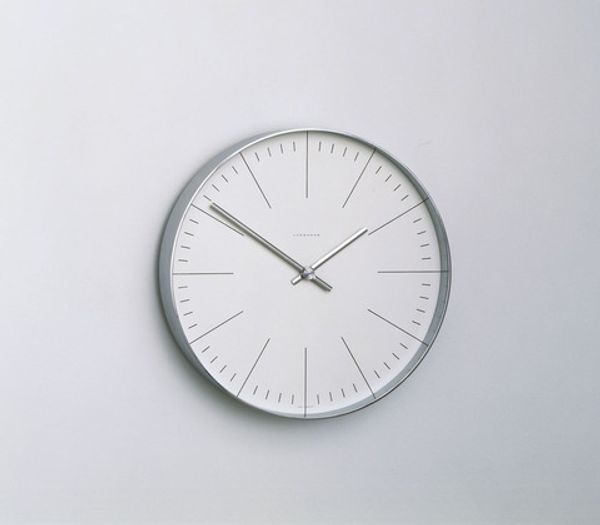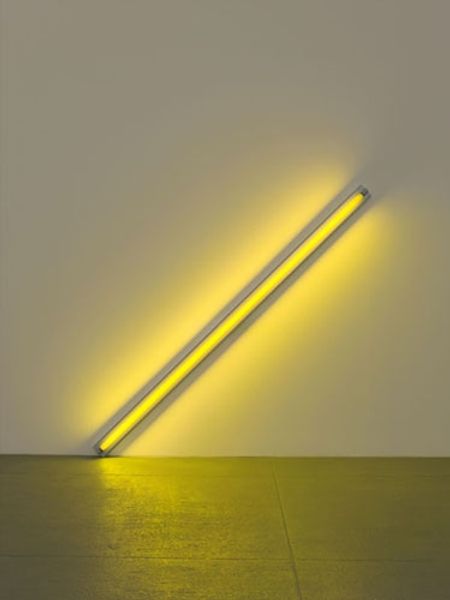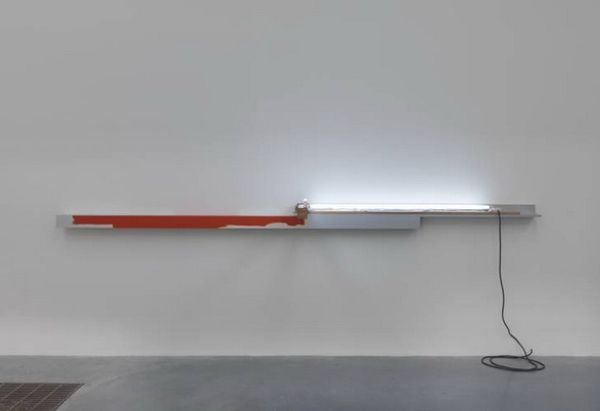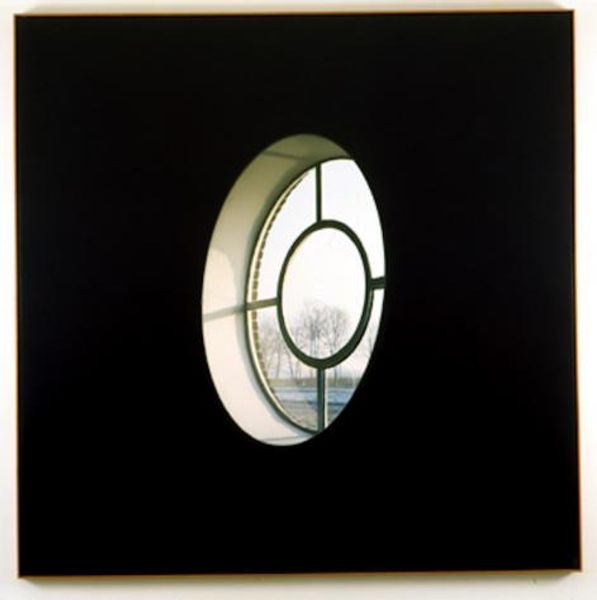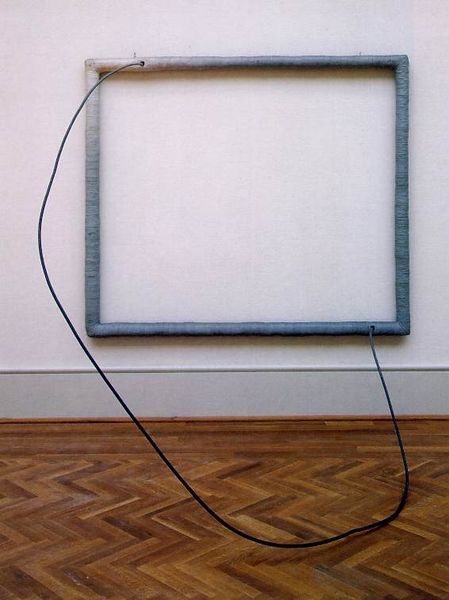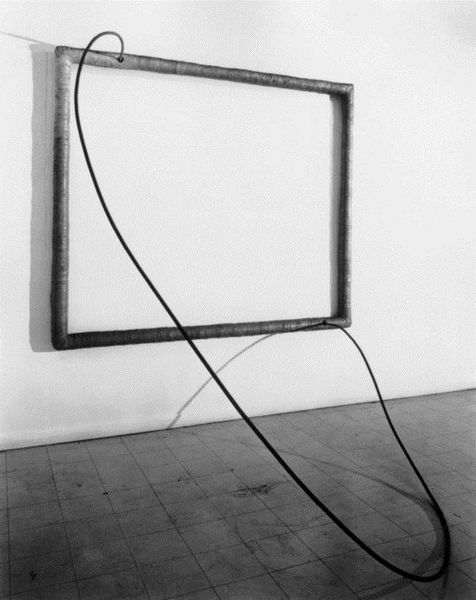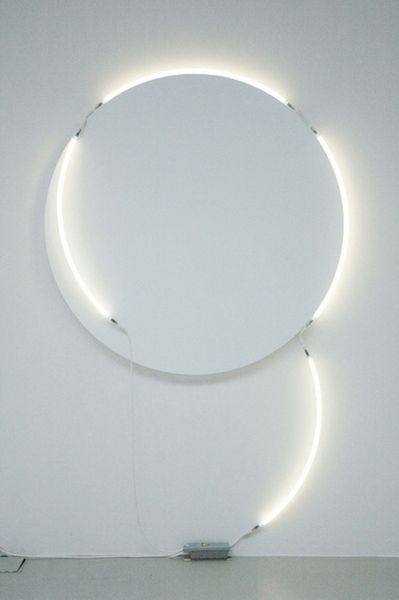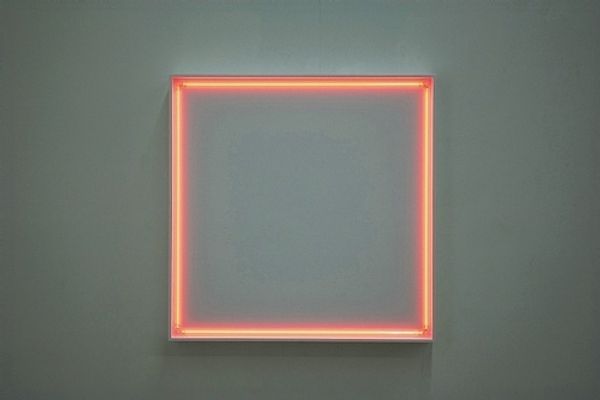
The Top Thirteen Singles from Billboard’s Hot 100 Singles Chart for the Week Ending September 11, 1993 1993
0:00
0:00
Copyright: Stephen Prina,Fair Use
Curator: Let's discuss Stephen Prina’s artwork, "The Top Thirteen Singles from Billboard’s Hot 100 Singles Chart for the Week Ending September 11, 1993," created in 1993. It's presented through photography and installation art. What strikes you initially about it? Editor: The starkness of it. The clock face dominating the frame, but also this sense of sterile observation. It feels both cold and strangely, quietly, powerful. Is that a sound system connected below? Curator: Yes. The piece's impact is layered, isn't it? Consider the date: 1993. Culturally, politically, where were we? The music of that specific week acts as a snapshot of the cultural zeitgeist. Who had power? Who was silenced? What narratives dominated the airwaves? Editor: And that’s where it becomes powerful – the music as coded memory, an index of feelings that echo into today. I am curious about the choice of the clock. What would the clock symbolize? It evokes feelings of impermanence and time fleeting. Perhaps an anxiety around this “snapshot” fading into obscurity? Curator: Precisely. Time becomes a critical lens. The artwork uses both auditory and visual elements, encouraging us to decode power dynamics within cultural production. What’s celebrated and what’s ignored? Editor: I’m drawn back to the monochrome. It strips away any immediate emotional response to color, forcing us to engage with the symbols—the clock, the music system, and most importantly that specific moment. A sense of almost archaeological dig, trying to unearth what’s been forgotten. Curator: The abstraction Prina employs lets the audience insert themselves into that history. Who were they in relation to those top thirteen singles? Did they connect to the dominant narrative? Or were they on the fringes? Editor: The use of photography makes the image feel "factual," an accurate portrayal of that week; yet the installation allows Prina to distort that presumed understanding, asking the viewer what really remains from that singular moment. Curator: Ultimately, I feel that the art acts as an instrument for self-inquiry. Editor: Absolutely, Prina forces a reckoning with memory and the narratives shaping our past. It pushes me to reconsider the fleeting cultural touchstones. Thank you for helping me unravel the complexities of Prina’s work.
Comments
No comments
Be the first to comment and join the conversation on the ultimate creative platform.
